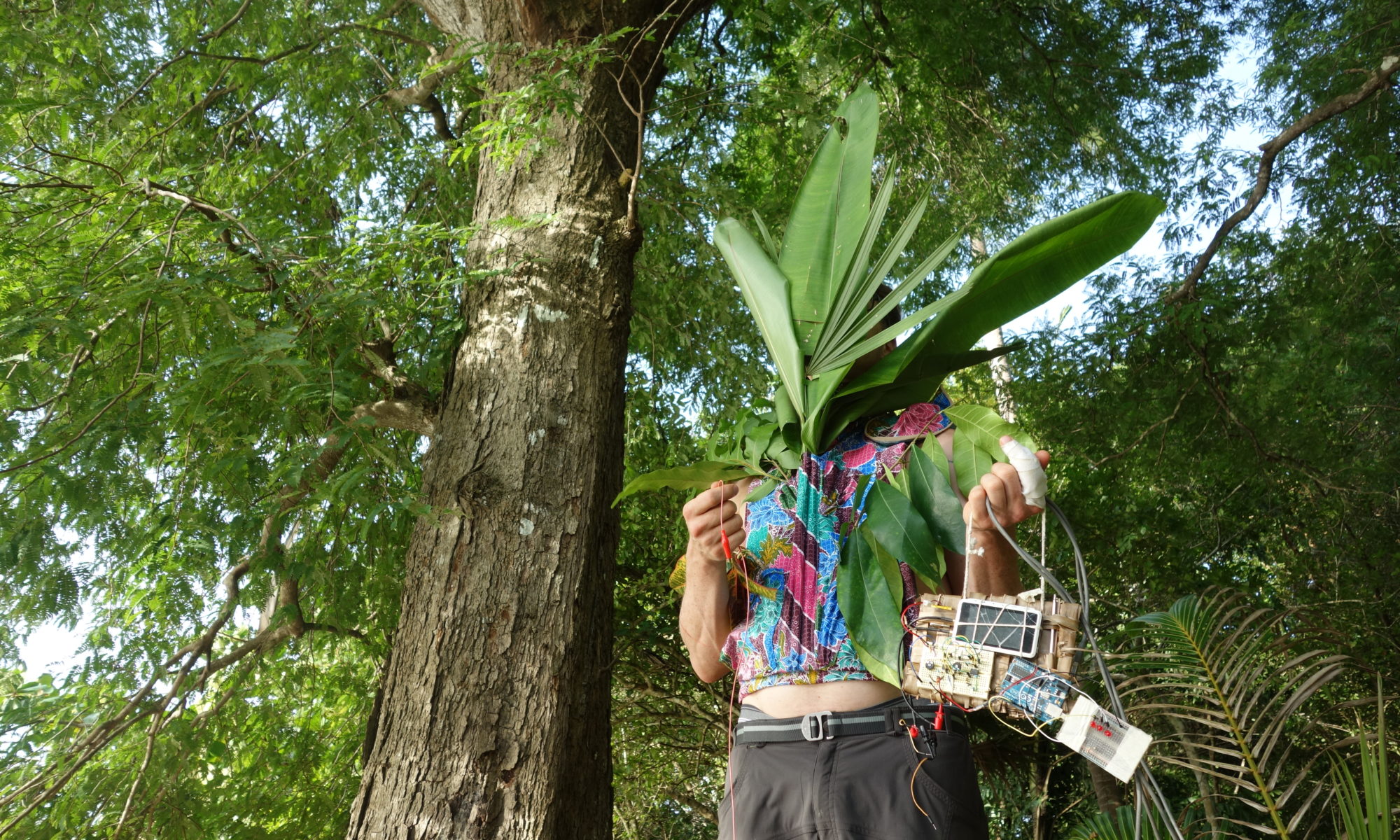by Mika Satomi
Costuming TAN is a wearable antenna for Tree Area Network Project by Ingo Randolf. It is an attempt to also think about how we understand ourselves, nature and technology beside making a fancy probe for a technological instrument.
This is a Ritual for Tree Huggers.
Some say hugging trees gives them ennergy, or recharge their lost power, luck and wisdom. One may believe that one can communicate with trees when synchronizing with them.
In each households, a spirit lives.

One can find a small house like shaped statue somewhere in a household. This is made specially for spirits to reside. Residents place food in front of these houses so the spirits can eat. In return the spirits protect the house from thief and bad lucks. These spirits are not almighty. Sometimes they get into bad moods and make a little mischief or get lazy and result in harm to the house owners.

I felt like they are a bit like the cats in this island. They protect houses and inhabitants from the snakes, cockroaches and rats. They eat random food we give. Sometimes they are not in a mood and puke on our backpacks and pee on our laptop power chargers.
Do Thai people really believe in the spirits?
During my stay in Koh Lon, I was reading a book by Robert Pfaller called “On the Pleasure Principle in Culture”. In this book, he introduces the concept of Croyance (believe/superstition) and Foi (Faith) from Octave Mannoni. Pfaller points out that our “civilized” culture is a culture of Faith. We draw self-esteem from the illusion. In Mannoni’s theory, Mechanism of Croyance operates within the illusion of others. For example, “I know wearing a mask will not let the spirit possess me, but our ancestors believed in it. So I wear the mask and act as if I am possessed” He points out that the owner of the illusion (who believes in it) is often at somewhere else in the case of Croyance. Another example: when we talk about bad luck happened to your friend, and say “oh, I am lucky that I am fine” and you would knock a wood to prevent the very bad luck does not happen to you. In this case, you are very much aware that “knocking wood” does no relation to keep you healthy. Nonetheless, if you did not knock a wood and something bad happens to you, you will feel bad. So “just in case” you would knock a wood as a believer. This is what Pfaller calls as “illusion of the others”.
The project is a reflection of my thought around this topic. When we have faith in religion, political system, or science, it is us who believe in it. We become the subject of the illusion. There are no distance between the illusion and ourselves.
The costume for TAN is for Tree Huggers (or any of us who feels a faith in Nature) to step back and see their belief as an illusion of someone else, to give a space to observe their faith in Nature and/or Science from outside perspective.


The costume is made with Batic Fabric. Batic is a technique to dye fabric with wax resist that is widely practiced in the South East Asia (and many other region in the world) in traditional clothing. I have purchased this fabric in Phuket stating “made in Malaysia”, so technically it is not a local fabric, but you can observe a lot of locals wear them as sarung. The costume consists of a lot of long pockets to hold plant’s stems like flower bases.


I have added crochet behind the collar so one can tie lace to fasten the garment. Shoulder pad is curved like the traditional Thai Opera costumes.


The inner side of the collar is embroidered with conductive thread creating an electrical connection to the wearer’s skin. The end of the embroidery is made into small crochet loop on the outer side of the collar that connects with a crocodile clip cable to the measurement tool.


Monica was nice to be a model to test how it looks on a person. The costume is designed to fit various body size person.



The final experiment is documented with Ingo wearing the costume and acting as a prove/antenna for the Tree Area Network. We could reliably receive data from the environmental sensor (humidity/ temperature) placed on the tree 3m above us.
But why one should make such a big effort to create a costume and wear a complicated plant garment to become a simple probe for an instrument?
Rituals existed in many cultures, and western or modernized country is not an exception. We just have forgotten about it. We instead practice faith (Foi) and have very little tolerance with people who do not share the same faith. Costuming this otherwise very technical device is an attempt to take ourselves “un-serious”.
Originally I planned to make fabric antennas to replace the current PAN/TAN antenna. I started with experimenting with smocking, which is an old textile technique. I have started with pattern experiment and then added conductive thread on the base fabric. But the result was not very interesting.
Another attempt was to make a crochet antenna with a combination of silver coated copper thread and linen thread. At the end we did not use this antenna for TAN experiment due to time constrain, but it has a nice aesthetic potential.
After the documentation of the project, the costume became a dress for Pom. At the end this fabric and the design suits her the best!



















